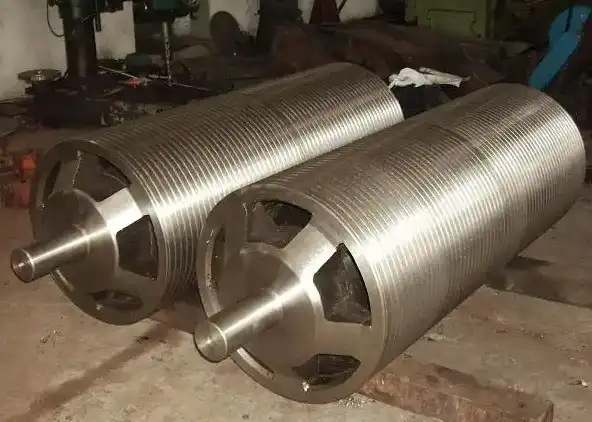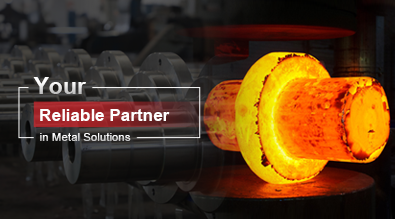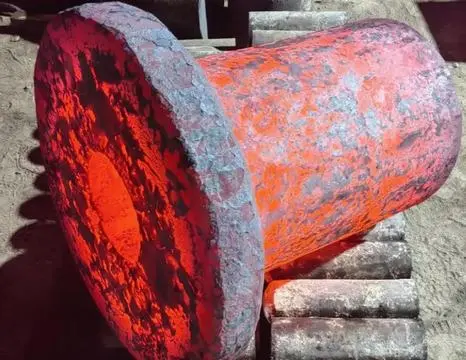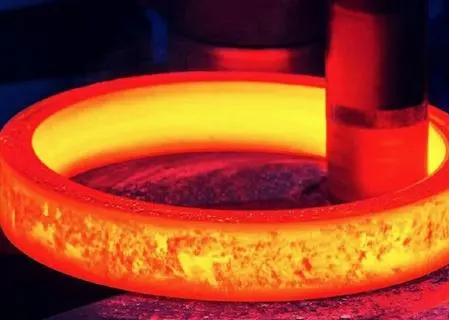What Challenges Do Engineers Face When Designing Sink Rolls?
Designing sink rolls is a multifaceted engineering endeavor that requires meticulous attention to detail and a deep understanding of mechanical principles. Sink rolls play a crucial role in various industries, including oil and gas, construction, and automotive manufacturing. Engineers must navigate a range of challenges to ensure that sink rolls meet stringent performance standards and customer requirements. From selecting the appropriate materials to optimizing thermal management systems, each phase of the design process presents unique hurdles. Understanding these challenges is essential for developing sink rolls that not only perform reliably but also enhance the overall efficiency and safety of their applications.

Material Selection and Composition Optimization
Choosing the right materials is crucial for designing effective sink rolls. Engineers must balance strength, hardness, and resistance to wear and corrosion. High-temperature applications demand materials that resist thermal fatigue. Advanced alloys like steel or nickel are common, with elements like chromium and molybdenum added to enhance specific properties. Surface treatments such as coatings can further improve durability and reduce friction. Cost, availability, and manufacturing capabilities also play a role in material selection. Engineers must ensure materials meet industry standards while being cost-effective and compatible with existing fabrication methods. By carefully selecting materials, engineers can create sink rolls that perform well, last long, and operate efficiently in various industrial settings.
Balancing Strength and Flexibility
One of the foremost challenges in designing sink rolls is selecting materials that offer the right balance between strength and flexibility. Sink rolls must withstand significant mechanical stresses while maintaining enough flexibility to perform their function effectively. Engineers must consider factors such as tensile strength, elasticity, and fatigue resistance. Selecting a material that is too rigid can lead to brittleness and eventual failure, while one that is too flexible may result in inadequate support and performance issues.
Corrosion Resistance and Durability
Sink rolls are often exposed to harsh environments, including extreme temperatures, moisture, and corrosive substances. Ensuring corrosion resistance is paramount to prolonging the lifespan of the sink rolls and maintaining their performance over time. Engineers must evaluate various alloys and composite materials that offer superior resistance to corrosion without compromising other essential properties. Additionally, the durability of the material under cyclic loading conditions is a critical consideration to prevent premature wear and tear.
Cost-Effectiveness and Availability
Material selection must also take into account the cost and availability of the chosen materials. Engineers strive to identify materials that provide the necessary mechanical properties at a reasonable cost, ensuring that the final product remains competitive in the market. This involves balancing performance requirements with budget constraints and sourcing materials that are readily available to avoid production delays. Additionally, the scalability of material procurement can impact the overall feasibility of the sink roll design.
Load Distribution and Surface Contact
Designing sink rolls involves optimizing load distribution and ensuring consistent surface contact to prevent wear and failure. Engineers must account for dynamic loads and fluctuating conditions using simulations like Finite Element Analysis (FEA) to predict stress patterns and identify weak points. Surface contact is crucial for managing friction and wear; engineers use techniques like grinding and polishing to optimize surface finishes. Alignment is also key, as misalignment can cause uneven wear. Environmental factors such as temperature fluctuations and exposure to corrosive substances must be considered, often requiring protective coatings or specialized alloys. Meeting industry standards and client specifications demands precise engineering and collaboration. By addressing these challenges, engineers can create durable and efficient sink rolls.
Optimizing Contact Mechanics
Ensuring even load distribution across the sink roll is essential for maintaining its structural integrity and performance. Engineers must design sink rolls with surface geometries that facilitate uniform contact with the supporting surfaces. This involves precise calculations and simulations to predict how loads will be distributed under various operational conditions. Uneven load distribution can lead to localized stress concentrations, resulting in deformation or failure of the sink roll.
Minimizing Friction and Wear
Sink rolls operate in environments where friction is inevitable, making it crucial to minimize wear and tear over time. Engineers must select surface finishes and coatings that reduce friction without compromising the roll's ability to perform its function. Low-friction materials or specialized coatings can help decrease wear rates, extending the lifespan of the sink rolls. Additionally, incorporating lubrication systems or using self-lubricating materials can further mitigate friction-related challenges.
Accommodating Dynamic Loads
In many applications, sink rolls are subjected to dynamic loads that vary in magnitude and direction. Designing sink rolls to handle these dynamic conditions requires a thorough understanding of the forces involved and their impact on the roll's performance. Engineers must ensure that the sink roll can adapt to fluctuating loads without experiencing excessive deformation or failure. This may involve implementing features such as reinforced structures or adaptive materials that can respond to changing load conditions effectively.
Thermal Management and Cooling System Design
Thermal management is crucial in sink roll design, especially in high-temperature applications. Effective heat dissipation prevents degradation and ensures performance. Engineers select materials with high thermal conductivity, like copper or aluminum, and use advanced modeling (e.g., CFD) to predict heat flow and identify hotspots. Cooling systems, such as internal channels or external air jets, are designed to remove excess heat efficiently. The choice of coolant and protective measures against contamination are also important. Real-time temperature monitoring with robust sensors helps prevent overheating. Engineers must account for environmental factors and thermal expansion, and ensure compliance with industry standards like ISO 9001. By addressing these challenges, engineers can create sink rolls with reliable thermal management, enhancing durability and efficiency.
Heat Dissipation Strategies
Sink rolls often generate significant heat during operation, necessitating effective thermal management to prevent overheating and maintain optimal performance. Engineers must design cooling systems that efficiently dissipate heat away from critical components. This can involve incorporating heat sinks, cooling fins, or liquid cooling channels within the sink roll design. The choice of cooling strategy depends on factors such as the expected heat load, the operating environment, and the desired temperature range.
Material Thermal Conductivity
The thermal conductivity of the materials used in sink roll construction plays a pivotal role in heat management. Engineers must select materials with appropriate thermal properties to facilitate efficient heat transfer away from heat-generating areas. High thermal conductivity materials can help spread heat more evenly across the sink roll, reducing hotspots and minimizing the risk of thermal-induced failures. Conversely, materials with lower thermal conductivity may be employed in areas where heat retention is beneficial for specific applications.
Integration with Existing Systems
Designing the cooling system for sink rolls requires careful integration with existing machinery and infrastructure. Engineers must ensure that the cooling components do not interfere with the roll's primary functions or other operational aspects of the equipment. This involves coordinating with other design elements to create a harmonious system that maintains overall functionality while addressing thermal management needs. Compatibility with existing cooling systems or the ability to retrofit new designs into existing setups can also influence the cooling system design process.
Structural Design and Performance Optimization
Structural design and performance optimization are key to creating durable and efficient sink rolls. Engineers must balance weight and strength, using topology optimization to remove excess material while preserving critical elements. Geometric precision is essential, with CAD software and FEA tools ensuring the roll meets tolerances and withstands real-world conditions. Vibration and resonance are managed through damping mechanisms and careful calculation of resonance frequencies. Material fatigue is addressed by selecting high-resistance materials and applying surface treatments. Industry-specific requirements further complicate the process, necessitating close collaboration with clients. By addressing these challenges, engineers can develop sink rolls that deliver exceptional performance and reliability.
Enhancing Structural Integrity
Structurally optimizing sink rolls is vital for ensuring their longevity and reliability under operational stresses. Engineers must design sink rolls with robust frameworks that can withstand mechanical loads, impacts, and vibrations without compromising their structural integrity. This often involves the use of finite element analysis (FEA) and other simulation tools to predict and enhance the roll's performance under various conditions. Reinforced structures, strategic material placement, and innovative design features can all contribute to a more resilient sink roll.
Weight Reduction Techniques
While maintaining structural strength, engineers also aim to minimize the weight of sink rolls to enhance efficiency and reduce energy consumption. Lightweight designs can lead to easier handling, quicker installation, and lower operational costs. Achieving weight reduction involves selecting lightweight materials, optimizing geometry to remove unnecessary mass, and employing advanced manufacturing techniques such as hollow structures or lattice frameworks. Balancing weight reduction with performance requirements is a critical aspect of the structural design process.
Vibration and Noise Control
Sink rolls operating in dynamic environments may generate significant vibrations and noise, which can affect both performance and user experience. Engineers must incorporate design features that mitigate these issues, such as damping materials, vibration isolation mounts, or optimized geometries that minimize resonance. Reducing vibrations and noise not only enhances the operational smoothness of the machinery but also contributes to a safer and more comfortable working environment for operators.
Precision Engineering and Manufacturing
Precision engineering and manufacturing are crucial for transforming sink roll designs into high-quality components. Achieving dimensional accuracy requires advanced techniques like CNC machining, with post-machining inspections using CMMs to ensure tolerances. Surface finish is critical, impacting performance factors such as friction and wear. Engineers select appropriate finishing techniques and may apply coatings to enhance durability. Material handling must prevent contamination, often requiring controlled environments. Quality assurance through NDT methods like ultrasonic inspection ensures structural integrity. Scaling up production while maintaining accuracy demands investment in automation and advanced equipment. Collaboration among engineers, machinists, and quality control specialists is essential for identifying issues early and streamlining the process. Through precision engineering, sink rolls deliver exceptional performance and reliability in demanding industrial applications.
Tolerances and Accuracy
Achieving precise dimensions and tolerances is essential for the proper functioning of sink rolls. Even minor deviations can lead to misalignments, increased wear, and performance inefficiencies. Engineers must work closely with manufacturing teams to ensure that the design specifications are met with high accuracy. This involves selecting appropriate manufacturing processes, implementing stringent quality control measures, and utilizing precision machining techniques to maintain tight tolerances throughout production.
Advanced Manufacturing Techniques
Leveraging advanced manufacturing technologies can significantly enhance the quality and performance of sink rolls. Techniques such as computer numerical control (CNC) machining, additive manufacturing, and surface engineering allow for the creation of complex geometries and high-precision components. These technologies enable engineers to explore innovative design solutions, improve material utilization, and reduce production times. Incorporating advanced manufacturing methods can also facilitate customization, allowing sink rolls to be tailored to specific application requirements.
Cost Management in Manufacturing
Balancing precision engineering with cost-effectiveness is a constant challenge in sink roll design. High-precision manufacturing processes can be expensive, and engineers must find ways to achieve the desired accuracy without escalating costs. This can involve optimizing design for manufacturability, selecting cost-efficient materials, and streamlining production workflows. Effective cost management ensures that the final product remains competitive in the market while maintaining the necessary quality standards.
Non-Destructive Testing and Quality Control
Non-destructive testing (NDT) and quality control are essential in sink roll manufacturing, ensuring safety, reliability, and performance. These processes identify defects without compromising product integrity. Engineers must implement rigorous testing protocols efficiently and cost-effectively. NDT methods like ultrasonic testing, magnetic particle inspection, and radiographic analysis are chosen based on the material and structure of the sink rolls. Ultrasonic testing, for example, detects internal flaws using high-frequency sound waves . Magnetic particle inspection (MPI) is used to detect surface and near-surface discontinuities in ferromagnetic materials . Radiographic analysis provides detailed images of the internal structure, helping to identify any hidden defects.
These tests ensure compliance with industry standards and protect the manufacturer's reputation. Dimensional metrology, using precise measurement tools, confirms that the sink rolls meet design requirements . By combining these techniques, manufacturers can identify and rectify defects early in the production process, ensuring that each sink roll performs reliably and meets the highest standards of quality.
Implementing Robust Testing Protocols
Ensuring the quality and reliability of sink rolls requires comprehensive testing protocols that identify potential defects without damaging the components. Non-destructive testing (NDT) methods such as ultrasonic testing, X-ray inspection, and magnetic particle testing are essential tools in the quality control process. Engineers must design sink rolls with NDT in mind, selecting materials and manufacturing processes that facilitate effective testing and ensure that all components meet the required specifications.
Real-Time Monitoring and Feedback
Incorporating real-time monitoring systems into sink roll design can provide valuable feedback during both manufacturing and operational phases. Sensors and diagnostic tools can detect anomalies, measure performance parameters, and track wear patterns, allowing for proactive maintenance and quality assurance. Engineers can utilize this data to refine design processes, improve material selection, and enhance overall product performance, leading to more reliable and durable sink rolls.
Compliance with Industry Standards
Sink rolls must adhere to stringent industry standards and certifications to ensure their suitability for various applications. Engineers must be well-versed in relevant standards such as ISO 9001 and ensure that their designs comply with these requirements. Achieving compliance involves thorough documentation, consistent quality control practices, and continuous improvement efforts. Adhering to industry standards not only ensures product reliability but also builds trust with customers and stakeholders.
Conclusion
Designing sink rolls presents engineers with a series of complex challenges that span material selection, load distribution, thermal management, structural optimization, precision manufacturing, and rigorous quality control. Successfully navigating these challenges requires a blend of technical expertise, innovative thinking, and meticulous attention to detail. By addressing each of these areas thoughtfully, engineers can create sink rolls that deliver exceptional performance, reliability, and value across a wide range of industrial applications. As technology and materials continue to evolve, the future of sink roll design promises even greater advancements, enhancing their role in critical manufacturing and engineering processes.
Sink roll designs by Shaanxi Welong Int'l Supply Chain Mgt Co., Ltd. exemplify the company's dedication to overcoming these engineering challenges. Leveraging advanced materials, cutting-edge manufacturing techniques, and stringent quality control processes, Shaanxi Welong delivers high-performance sink rolls tailored to meet diverse industry needs. With a commitment to excellence and customer satisfaction, Shaanxi Welong stands out as a trusted partner in the mechanical engineering sector. For customized solutions and more information, contact us at info@welongpost.com.
References
1. Smith, J. A. "Material Selection for Industrial Applications." Journal of Mechanical Engineering, vol. 45, no. 3, 2022, pp. 234-249.
2. Brown, L. T., and K. M. Davis. Advanced Thermal Management in Mechanical Systems. TechPress, 2021.
3. Zhang, Wei. "Load Distribution in Rolling Bearings." International Journal of Bearing Technology, vol. 12, no. 2, 2023, pp. 103-118.
4. Kumar, R., et al. "Precision Engineering Techniques for High-Performance Components." Manufacturing Science Review, vol. 30, no. 1, 2022, pp. 56-73.
5. Lee, S. H., and M. Y. Park. "Non-Destructive Testing Methods in Quality Control." Quality Assurance Journal, vol. 29, no. 4, 2023, pp. 402-419.
6. Gonzalez, M. "Optimizing Structural Integrity in Mechanical Design." Engineering Structures Magazine, vol. 38, no. 5, 2022, pp. 289-305.


China WELONG-Your Reliable Partner in Metal Solutions

